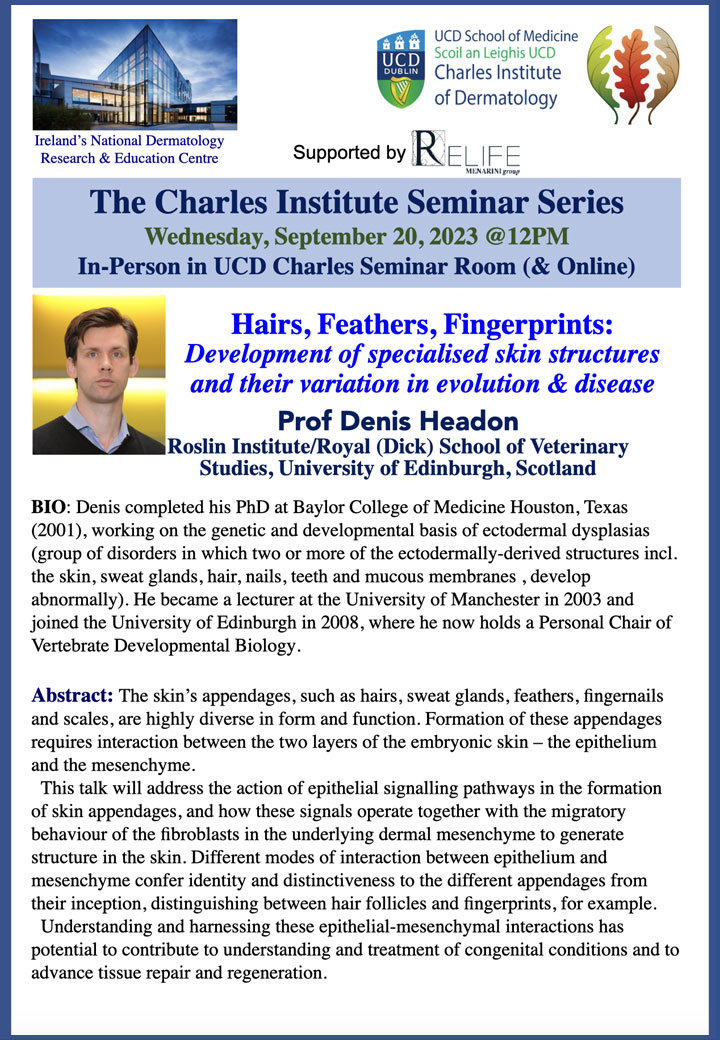Charles Institute Seminar Series 2023-24: Hairs, Feathers, Fingerprints: Development of specialised skin structures and their variation in evolution & disease with Prof Denis Headon
Date of Talk: Wednesday, September 20, 2023 @12PM
Location: Charles Seminar Room / Online Via Zoom
Talk Title: Hairs, Feathers, Fingerprints: Development of specialised skin structures and their variation in evolution & disease
Speaker Details: Prof Denis Headon, Roslin Institute/Royal (Dick) School of Veterinary Studies, University of Edinburgh, Scotland
Short Biography: Denis completed his PhD at Baylor College of Medicine Houston, Texas (2001), working on the genetic and developmental basis of ectodermal dysplasias (group of disorders in which two or more of the ectodermally-derived structures incl. the skin, sweat glands, hair, nails, teeth and mucous membranes , develop abnormally). He became a lecturer at the University of Manchester in 20The skin’s appendages, such as hairs, sweat glands, feathers, fingernails and scales, are highly diverse in form and function. Formation of these appendages requires interaction between the two layers of the embryonic skin – the epithelium and the mesenchyme.
This talk will address the action of epithelial signalling pathways in the formation of skin appendages, and how these signals operate together with the migratory behaviour of the fibroblasts in the underlying dermal mesenchyme to generate structure in the skin. Different modes of interaction between epithelium and mesenchyme confer identity and distinctiveness to the different appendages from their inception, distinguishing between hair follicles and fingerprints, for example.
Understanding and harnessing these epithelial-mesenchymal interactions has potential to contribute to understanding and treatment of congenital conditions and to advance tissue repair and regeneration.DNA photodamage in the epidermal basal layer is important for skin cancer, the incidence of which is much lower in white skin compared to black.
Studies comparing extreme skin phenotypes in vivo have shown that melanin
offers a protection factor of ~60 against basal layer DNA photodamage. This
protection decreases in the upper epidermis and is related to melanin
concentration. People with pigmented skin typically have poor vitamin D status,
yet laboratory studies show that the inhibitory factor of melanin against vitamin D
synthesis is <1.5. This difference in impact is best explained by the spatial
relationship between melanin and the target of interest. High melanin
concentration above basal nuclear DNA is extremely protective, but there is ample
7-dehydrocholesterol (vitamin D precursor) in the upper epidermis where the concentration of melanin is relatively low.
